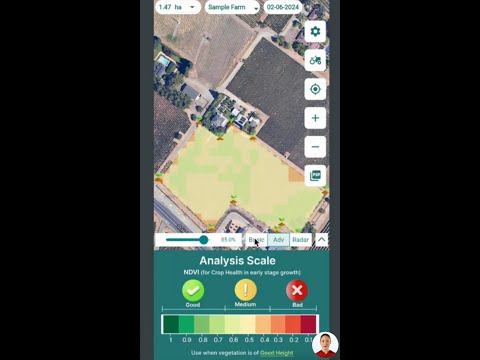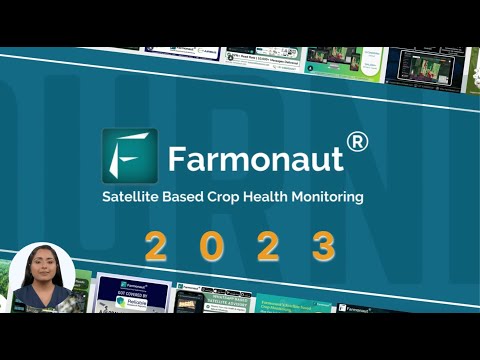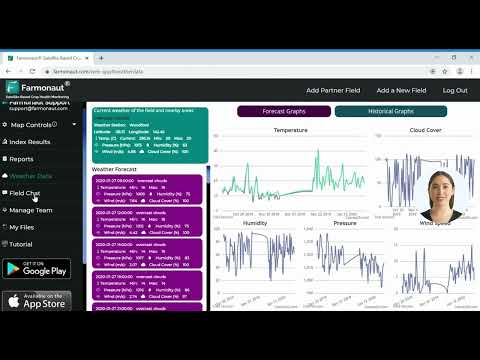Urgent: South Bay Sewage Crisis Threatens Imperial Beach Campground Reopening – Health and Safety Concerns Escalate
“The Tijuana River Valley Regional Park, a popular campground in San Diego County, faces closure due to toxic air, soil, and water contamination.”
As we delve into the heart of the South Bay sewage crisis, we find ourselves confronting a dire situation that threatens not only the natural beauty of our beloved Tijuana River Valley Regional Park but also the health and safety of our community. The impending reopening of this once-pristine campground on April 1st has sparked intense debate and concern among local leaders, environmental experts, and residents alike. In this comprehensive analysis, we’ll explore the multifaceted challenges facing Imperial Beach and the surrounding areas, examining the environmental impacts, health risks, and potential solutions to this pressing issue.
The South Bay Sewage Crisis: A Looming Threat to Public Health and Environment
The South Bay sewage crisis has reached a critical point, forcing the closure of the Tijuana River Valley Regional Park, a gem in San Diego County’s crown of natural attractions. As plans to reopen the park emerge, we find ourselves at a crossroads, balancing the desire for public recreation against the stark realities of environmental contamination and potential health hazards.
Local leaders, including Imperial Beach Mayor Paloma Aguirre and Crystal Irving, the Union Representative for County Park Rangers, have raised alarming concerns about the toxicity levels in the air, soil, and water throughout parts of the South Bay. Their urgent calls for a delay in reopening the campground underscore the severity of the situation and the potential risks to public health.

The crisis highlights the delicate balance between environmental protection and public recreation in coastal areas affected by sewage contamination. As we navigate this complex issue, it’s crucial to understand the root causes, current challenges, and potential solutions to ensure the safety of our community and the preservation of our natural resources.
Understanding the Impact: Environmental and Health Concerns
The Tijuana River Valley Regional Park, which could be one of California’s most beautiful campgrounds, has been closed for over a year due to severe flooding caused by cross-border sewage. This contamination has not only damaged infrastructure but also poses significant risks to human health and the local ecosystem.
- Water Quality: The sewage crisis has severely impacted water quality in the area, with standing water potentially harboring dangerous bacteria and pathogens.
- Soil Contamination: Toxic substances in the sewage have likely seeped into the soil, raising concerns about long-term environmental damage and potential exposure risks for visitors.
- Air Quality: Reports of noxious odors and potential airborne contaminants have raised alarms about respiratory health risks for park visitors and nearby residents.
Mayor Aguirre’s statement that “people are getting sick” underscores the urgency of addressing these environmental health impacts. Countless reports have linked the sewage crisis to a range of health issues, including headaches, nausea, and respiratory problems.
The Reopening Dilemma: Safety vs. Recreation
“Cross-border sewage flooding has forced the delay of the April 1 reopening plan for the South Bay campground, impacting local recreation.”
The planned reopening of the Tijuana River Valley Regional Park Campground on April 1st has sparked a heated debate. While the park offers immense recreational value to the community, with trails connecting to the Pacific Ocean and facilities for camping, hiking, biking, and horseback riding, the potential health risks cannot be ignored.
Local leaders and park rangers have taken a strong stance, calling for an immediate cease and desist on the reopening plans. They argue that the county is prioritizing recreation over remediation, potentially putting visitors at risk. The demand for an independent scientific assessment before any reopening occurs highlights the need for transparent, data-driven decision-making in this crisis.
County Response and Safety Measures
San Diego County officials have stated their commitment to safety, asserting that bacteria and chemical levels in the soil, air, and water meet federal and state standards. They’ve outlined several measures taken to address the crisis:
- Removal of sediment and debris from affected areas
- Implementation of flood prevention measures
- Ongoing monitoring of environmental conditions
However, questions remain about the effectiveness of these efforts and whether they sufficiently address the complex nature of the sewage crisis. The county’s assurances have done little to allay the concerns of local leaders and environmental advocates who continue to push for more comprehensive remediation efforts.
Progress and Future Plans
Despite the ongoing challenges, there are signs of progress in addressing the South Bay sewage crisis:
- A recent $600 million allocation from Congress to upgrade the sewage treatment plant
- Mexico’s progress on bringing their treatment plant online, expected in the coming month
- Efforts to secure a state of emergency declaration to unlock additional funds from the Environmental Protection Agency for cleanup efforts
These developments offer hope for long-term solutions to the sewage crisis, but they also underscore the complexity and scale of the problem at hand.

Environmental Monitoring and Technological Solutions
In addressing complex environmental challenges like the South Bay sewage crisis, advanced monitoring technologies play a crucial role. While not directly involved in this specific situation, companies like Farmonaut offer innovative solutions for environmental monitoring and management that could be valuable in similar contexts.
Farmonaut’s satellite-based monitoring systems, typically used for agricultural purposes, demonstrate the potential for applying such technologies to environmental crisis management. Their carbon footprinting tools, for instance, could be adapted to track environmental impacts in affected areas, providing real-time data on contamination levels and helping guide remediation efforts.
Similarly, the company’s traceability solutions, while designed for agricultural supply chains, showcase how blockchain technology could be used to ensure transparency and accountability in environmental management processes. This could be particularly relevant in tracking the progress of cleanup efforts and ensuring compliance with safety standards.
Health and Safety Assessment
To provide a clear overview of the current situation at the Tijuana River Valley Regional Park, we’ve compiled a health and safety assessment based on available information:
| Area of Concern | Current Status | Potential Health Impacts | Remediation Efforts | Estimated Timeline for Improvement |
|---|---|---|---|---|
| Water Quality | High Risk | Gastrointestinal issues, skin infections | Sewage treatment plant upgrades | 6+ months |
| Soil Contamination | Moderate Risk | Exposure to toxic substances | Soil cleanup and monitoring | 3-6 months |
| Air Quality | Moderate Risk | Respiratory problems, headaches | Ongoing air quality monitoring | 1-3 months |
| Infrastructure | Low to Moderate Risk | Safety hazards from damaged facilities | Repairs and flood prevention measures | 1-3 months |
This assessment underscores the multi-faceted nature of the crisis and the need for comprehensive, long-term solutions to ensure public safety and environmental restoration.
Community Impact and Response
The South Bay sewage crisis has had a profound impact on the local community, affecting not only recreational activities but also the broader quality of life for residents. The closure of the Tijuana River Valley Regional Park has deprived the community of a valuable natural resource and gathering place.
Community response to the crisis has been robust, with local activists, environmental groups, and concerned citizens joining forces to demand action. Their efforts have been crucial in keeping the issue in the public eye and pressuring officials at all levels of government to take decisive action.
Cross-Border Collaboration and International Implications
The South Bay sewage crisis underscores the importance of international cooperation in addressing environmental challenges. The cross-border nature of the problem, with sewage originating from Mexico flowing into U.S. waters, necessitates a collaborative approach between the two countries.
Recent progress, such as Mexico’s efforts to bring their treatment plant online, demonstrates the potential for effective cross-border solutions. However, sustained diplomatic efforts and shared investment in infrastructure will be crucial for long-term resolution of the crisis.
Environmental Justice and Equity Considerations
The sewage crisis in South Bay raises important questions about environmental justice and equity. Communities near the affected areas, often lower-income and minority populations, bear a disproportionate burden of the environmental and health impacts.
Addressing these equity concerns should be a central consideration in developing solutions to the crisis. This includes ensuring equal access to information, resources for mitigation, and representation in decision-making processes.
Looking Ahead: Long-Term Solutions and Sustainable Management
As we confront the immediate challenges of the South Bay sewage crisis, it’s crucial to look ahead and consider long-term, sustainable solutions. This crisis presents an opportunity to reimagine our approach to environmental management and public health protection in coastal areas.
- Infrastructure Investment: Significant upgrades to sewage treatment facilities on both sides of the border are essential for preventing future crises.
- Advanced Monitoring Systems: Implementing state-of-the-art environmental monitoring technologies can provide early warning of potential issues and guide rapid response efforts.
- Policy Reform: Strengthening environmental regulations and enforcement mechanisms can help prevent similar crises in the future.
- Public Education: Raising awareness about environmental health issues and promoting responsible use of natural resources is crucial for long-term sustainability.
The Role of Technology in Environmental Management
Innovative technologies play a crucial role in addressing complex environmental challenges like the South Bay sewage crisis. While not directly involved in this specific situation, companies like Farmonaut showcase how advanced technologies can be applied to environmental monitoring and management.
Farmonaut’s satellite-based monitoring systems, typically used for precision agriculture, demonstrate the potential for applying such technologies to environmental crisis management. Their large-scale management tools could potentially be adapted for monitoring large affected areas, providing real-time data on contamination levels and helping guide remediation efforts.
Similarly, Farmonaut’s advisory systems for crop plantations and forests showcase how AI and machine learning can be leveraged to provide actionable insights in complex environmental scenarios. While these tools are designed for agricultural purposes, they illustrate the potential for developing similar systems tailored to environmental crisis management.
Public Safety Guidelines and Recommendations
As discussions about reopening the Tijuana River Valley Regional Park continue, it’s crucial for potential visitors to be aware of safety guidelines and take necessary precautions:
- Avoid contact with standing water in the park area
- Do not allow pets to drink from water sources within the park
- Pay close attention to posted signs indicating contaminated areas
- Wash hands regularly and thoroughly, especially after any outdoor activities
- Report any unusual odors or visible contamination to park authorities
- Stay informed about the latest updates and advisories from local health officials
These guidelines are crucial for minimizing health risks while efforts to address the sewage crisis continue.
Conclusion: A Call for Action and Vigilance
The South Bay sewage crisis and its impact on the Tijuana River Valley Regional Park serve as a stark reminder of the delicate balance between human activity and environmental health. As we navigate the challenges of reopening this beloved community resource, we must prioritize public safety and environmental restoration above all else.
The crisis calls for a multifaceted approach, combining immediate remediation efforts with long-term infrastructure improvements and policy changes. It also highlights the need for continued vigilance, advanced monitoring systems, and public engagement in environmental issues.
As we move forward, let us remain committed to finding sustainable solutions that protect both our natural resources and the health of our communities. The path ahead may be challenging, but with collective effort, innovative thinking, and unwavering dedication to environmental stewardship, we can overcome this crisis and create a safer, cleaner future for Imperial Beach and the entire South Bay region.
FAQ Section
Q: When is the Tijuana River Valley Regional Park Campground scheduled to reopen?
A: The campground is currently set to reopen on April 1st, but local leaders are calling for a delay due to health and safety concerns.
Q: What are the main health risks associated with visiting the park?
A: The main health risks include exposure to contaminated water and soil, which could lead to gastrointestinal issues, skin infections, and respiratory problems.
Q: What measures are being taken to address the sewage crisis?
A: Measures include upgrading sewage treatment plants, implementing flood prevention measures, and seeking additional funding for cleanup efforts through a state of emergency declaration.
Q: Is it safe to visit the park once it reopens?
A: While county officials assert that safety measures are in place, local leaders and environmental experts express concerns about ongoing health risks. Visitors should exercise caution and follow all posted safety guidelines.
Q: How can community members stay informed about the situation?
A: Stay updated through official county and city websites, local news outlets, and community meetings addressing the sewage crisis and park status.
Earn With Farmonaut: Affiliate Program
Earn 20% recurring commission with Farmonaut’s affiliate program by sharing your promo code and helping farmers save 10%. Onboard 10 Elite farmers monthly to earn a minimum of $148,000 annually—start now and grow your income!
For developers interested in integrating environmental monitoring capabilities, check out Farmonaut’s API and API Developer Docs.





















